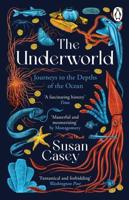Publisher's Synopsis
The agricultural produce in the country is freely marketed through private trade operating in organized markets/mandies. The role of the government normally is limited to protecting the interests of producers and consumers, only in respect of wage goods, mass consumption goods and essential goods. The government is promoting organized marketing of agricultural commodities in the country. For millennia, farmers satisfied rising food demand by bringing new land under the plow. But by mid-century cropland expansion could no longer meet the food needs of an increasingly populous and prosperous world. The 10,000 year era of steady expansion was over, and a new era began that stressed raising land productivity. As this high-yielding era shows signs of faltering, concern over the shrinking supply of cropland per person looms ever larger. Agriculture in India is constitutionally the responsibility of the states rather than the central government. The central government's role is in formulating policy and providing financial resources for agriculture. Integrated water resources management begins with the term water resources management itself, which uses structural measures and nonstructural measures to control natural and human-made water resources systems for beneficial uses. Water-control facilities and environmental elements work together in water resources systems to achieve water management purposes. This book covers all the aspects of agriculture. It is hoped, the book will be found to be of immense value to the students of higher education, researchers and teachers.










